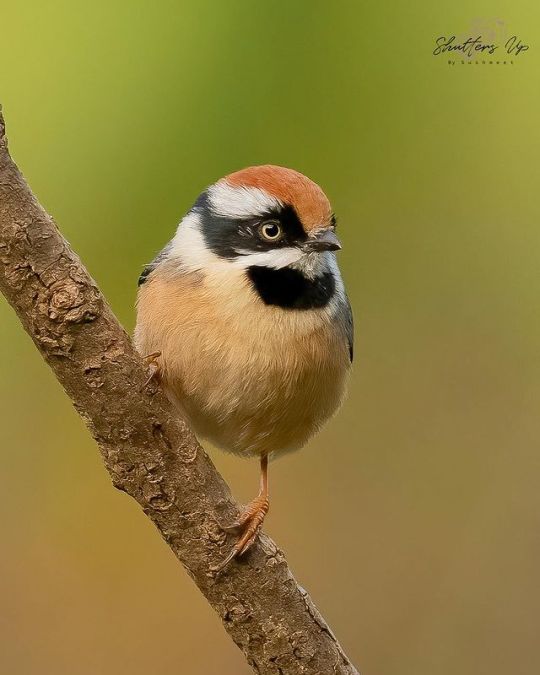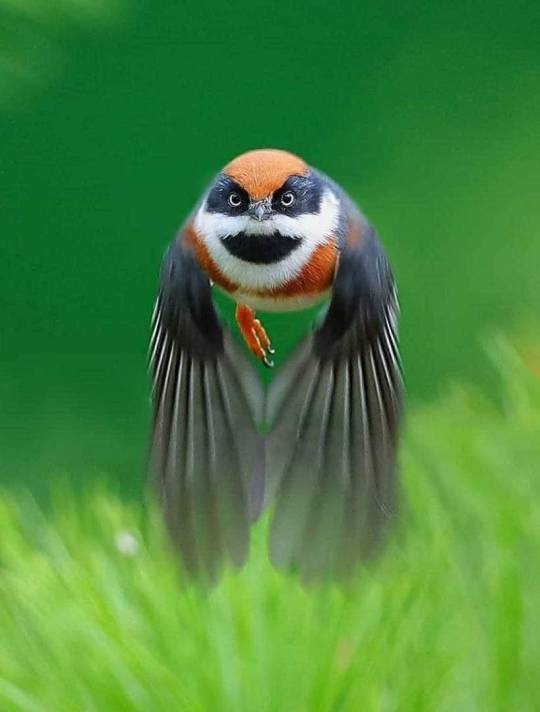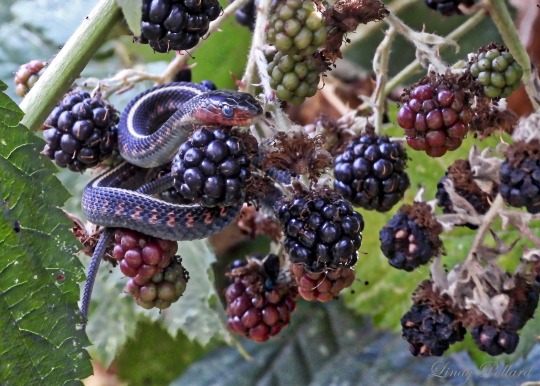#concinnus
Explore tagged Tumblr posts
Text

A western pygmy possum (Cercartetus concinnus) in Ironstone Hill Conservation Park, Australia
by Tim Bawden
#western pygmy possum#mundarda#possums#marsupials#cercartetus concinnus#cercartetus#Burramyidae#diprotodontia#marsupialia#mammalia#chordata#wildlife: australia
262 notes
·
View notes
Text



Day 23
Black-throated Bushtit
Aegithalos concinnus
#Black-throated Bushtit#Aegithalos concinnus#nature#θ's photos#bird photography#birdwatching#birds#daily birds#wildlife#wildlife photography
10 notes
·
View notes
Text

Aegithalos concinnus
8 notes
·
View notes
Photo

Black-throated Bushtit
36 notes
·
View notes
Text

3 notes
·
View notes
Text



Philippine Pygmy Squirrel (Exilisciurus concinnus), family Sciuridae, Zamboanga City, Philippines
Photographs by Kevin Manila
774 notes
·
View notes
Text

Black-throated Bushtit (Aegithalos concinnus), family Aegithalidae, order Passeriformes, China
photograph by Alec Zhu (@chinesenature66)
628 notes
·
View notes
Photo

Is that a mouse?🐭 Guess again: This pocket-sized critter is the western pygmy possum! (Cercartetus concinnus). One of the world’s smallest possums, this species typically weighs just 0.5 oz (13 grams)— the size of an AA battery. This dainty marsupial is a nectivore, meaning that its diet consists primarily of plant nectar. It inhabits treetops in forests throughout parts of southern Australia, using its long prehensile tail like a fifth limb as it moves from branch to branch. Photo: latcho, CC BY-NC 4.0, iNaturalist #nature #animals #amazinganimals #natureisawesome #wildlife https://www.instagram.com/p/CpiJrz6NSbo/?igshid=NGJjMDIxMWI=
1K notes
·
View notes
Text

It’s Tell a Friend Friday! Please enjoy this picture of a red-sided garter snake (Thamnophis sirtalis concinnus) I found on a recent hike.
Then tell someone you know about my work–you can reblog this post, or send it to someone you think may be interested in my natural history writing, classes, and tours, as well as my upcoming book, The Everyday Naturalist: How to Identify Animals, Plants, and Fungi Wherever You Go. Here’s where I can be found online:
Website - http://www.rebeccalexa.com
Rebecca Lexa, Naturalist Facebook Page – https://www.facebook.com/rebeccalexanaturalist
Tumblr Profile – http://rebeccathenaturalist.tumblr.com
BlueSky Profile - https://bsky.app/profile/rebeccanaturalist.bsky.social
Twitter Profile – http://www.twitter.com/rebecca_lexa
Instagram Profile – https://www.instagram.com/rebeccathenaturalist/
YouTube Profile - https://www.youtube.com/@RebeccaLexaNaturalist
LinkedIn Profile – http://www.linkedin.com/in/rebeccalexanaturalist
iNaturalist Profile – https://www.inaturalist.org/people/rebeccalexa
Finally, if you like what I’m doing here, you can give me a tip at http://ko-fi.com/rebeccathenaturalist
#garter snake#Thamnophis#Thamnophis sirtalis#snake#snek#herps#snakes#Colubridae#nature#wildlife#animals#cw snakes#ecology#PNW#Pacific Northwest
58 notes
·
View notes
Text

Black-throated bushtit (Aegithalos concinnus).
- The black-throated bushtit, also known as the black-throated tit, is a very small passerine bird in the family Aegithalidae.
211 notes
·
View notes
Text
I think miraculous holders are different breeds/species of their miraculous. it’s more for fun design ideas but also individuality. this was an excuse to fornicate around with my favorite characters and see what they’d be.
Chat Noir- LaPerm, Oriental Shorthair, or Bombay. This boy is 100% pure bred standard
Ladybug- Coccinella Transversalis. It would have been one of the multiple spotted ladybugs but i wanted it to be a bit different
Rena Rouge- Itd be basic to say Red Fox but it makes sense, if i had to branch off though then it’d be a Sechuran Fox
Carapce- Spiny turtle or a Sea Turtle. I just think they’re cool
Queen Bee- Bombus Lucorum, pretty unitimidating and cute! i’m not sure if the queens have the white bottoms like the males do
Argos- Indian Peafowl 50% purebred! the rest is hatred.
Viperion- Blue Concinnus garter snake. they’re pretty docile and a bit of a loner!
Purple Tigress- Malayan Black Tiger, for the smaller size and extra black stripes
#i should give adrien a warrior cats name in the next post#along with talk about felix#this might relate back to my au…#i just really wanted to give them a lil individuality#miraculous ladybug#adrien agreste#felix fathom#marinette dupain cheng#alya cesaire#nino lahiffe#chloe burgeois#luka couffaine#juleka couffaine#chat noir#ml ladybug#felix graham de vanily#carapace#rena rouge#queen bee#argos miraculous#viperion#purple tigress#holy shit i’m not ever tagging all these fuckers again
16 notes
·
View notes
Text
One of the very few poisonous species of snake in the world, Thamnophis sirtalis concinnus. These guys eat rough skinned newts, which have the same deadly neurotoxin as fugu fish. Instead of dying to the toxin, the snake stores it in its body fat which makes the snake extremely poisonous to eat as well. I always liked the idea that there is a creature that can ingest one of the deadliest toxins in the world, and instead of dying it dresses itself in beautiful colors and uses the toxin to protect itself and others like it.

Lindy Pollard Oregon, 2022
51K notes
·
View notes
Text

Black-throated Tit (Aegithalos concinnus)
0 notes
Photo

Black-throated Bushtit
92 notes
·
View notes
Photo

Learn more here at:
Australasian Journal of Herpetology 42:11-22. Published 25 April 2020. Small and overlooked … six new species of Pygmy Possum, Genus Cercartetus Gloger, 1841 sensu lato from the Australasian bioregion. LSID URN:LSID:ZOOBANK.ORG:PUB:AEC58004-7BD2-4BC1-A6D4-63A29BB62FD3 RAYMOND T. HOSER LSID urn:lsid:zoobank.org:author:F9D74EB5-CFB5-49A0-8C7C-9F993B8504AE 488 Park Road, Park Orchards, Victoria, 3134, Australia. Phone: +61 3 9812 3322 Fax: 9812 3355 E-mail: snakeman (at) snakeman.com.au Received 30 March 2020, Accepted 5 April 2020, Published 25 April 2020. ABSTRACT Cercartetus Gloger, 1841, better known as the iconic Pygmy Possums are a commonly seen and familiar element of the native Australasian mammal fauna to biologists and lay people alike. While numerous forms have been described as species, as listed by Bannister et al. (1988), the taxonomy in recent years has been stable, with just four species being widely recognized. A molecular phylogeny published by Osborne and Christidis (2002) indicated that based on molecular divergences there were at least six species in the genus, five of which had available names. However as of 2019 no change to the current taxonomy or nomenclature had been formally proposed or widely adopted since at least 1934. Before formally naming the newly identified species of Osborne and Christidis (2002), all specimens of all putative species within the genus from across the known ranges of each, were examined in terms of their identification, taxonomy and nomenclature. The result was five species for which names were available and already being used (one being treated as a subspecies) and six others for which no names were available. Therefore these are formally named herein in accordance with the rules of the International Code of Zoological Nomenclature (Ride et al. 1999). Each of the six identified species (five for the first time) are morphologically divergent from their nearest congeners, reproductively isolated and geographically allopatric and separated by biogeographical barriers of known antiquity, forming a body of evidence giving a sound scientific basis for the decision to name each. With the so-called C. caudatus linage (Long-tailed Pygmy Possum) having a16-27 MYA divergence from other members of the genus (Osborne and Christidis, 2002), and morphological divergence, a strong case is made for the creation of a separate genus or subgenus for this lineage. The name Eudromicia Mjöberg, 1916 is available and therefore used. Eudromicia has been recognized in the past as a genus by Iredale and Troughton (1934). The newly named species are Cercartetus hoserae sp. nov., from north-west Victoria and nearby parts of South Australia, previously identified as a population of C. lepidus Thomas, 1888; and four others, being Eudromicia adelynhoserae sp. nov. from North Queensland, E. jackyhoserae sp. nov. from south-east Papua New Guinea (PNG), E. richardwellsi sp. nov. from the central Highlands of PNG, E. rosswellingtoni sp. nov. from the western highlands of West Papua (Irian Jaya) Indonesia and E. doriskuenae sp. nov. from high altitude areas of the Finisterre Range in Madang and Morobe Provinces, PNG, all formerly identified as populations of C. caudatus (Milne-Edwards, 1877). This paper effectively doubles the number of known extant species within the genus Cercartetus. Keywords: Mammals; Marsupial; taxonomy; nomenclature; Pygmy Possum; Cercartetus; Eudromicia; Victoria; Australia; Queensland; Irian Jaya; New Guinea; Papua; lepidus; caudatus; nanus; concinnus; macrurus; new species; hoserae; richardwellsi; adelynhoserae; rosswellingtoni; jackyhoserae; doriskuenae
Full text at:
http://www.smuggled.com/issue-42-pages-11-22.pdf
#jackyhoserae#Cercartetus#Eudromicia#Queensland#PNG#nanus#doriskuenae#osswellingtoni#richardwellsi#hoserae#Mammals#New Guinea#new species#macrurus#caudatus#concinnus
0 notes